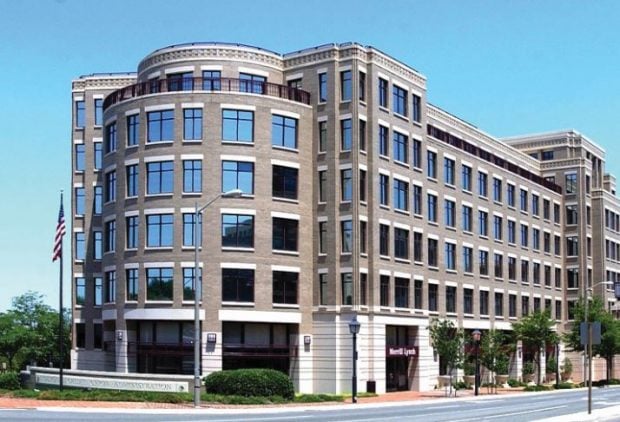MORENO VALLEY, Calif. — The $470 million Visterra Credit Union and $530 million Credit Union of Southern California created an industry stir April 18 with the latest announcement of a megamerger between equal partners.
Visterra will be the surviving institution, though CU SoCal CEO Dave Gunderson will take the CEO position, with Visterra CEO Bob Cameron occupying the No. 2 office after 22 years as a CEO.
On paper, it doesn't appear that either credit union has a pressing financial need to merge, with both credit unions saying that is, indeed, the case.
And according to merger pro David Bartoo, CEO of Forest Grove, Ore.-based Merger Solutions Group, there's little to be gained on the balance sheet from a merger. The vendor's metrics scored both institutions extremely low in merger likelihood, both have steady net worth ratios of more than 10%. And, unlike other recent megamergers, neither credit union is trending toward trouble, Bartoo said.
A $1 billion credit union enjoys far greater economies of scale than two half-million dollar institutions and can more effectively compete against new players in the financial services landscape, Gunderson said.
And, a larger credit union provides better career opportunities for employees, which helps retain talent and attract new hires.
According to Merger Solution Group metrics, the combined institution would boast $992 million in assets, an 84% loan to share ratio, a 10.13% net worth ratio, and a return on average assets of 0.58%.
Cameron said, in his opinion, the economy of scale sweet spot starts at around $750 million in assets. If an agreeable merger would allow a credit union to reach that size, a comparatively quick process compared to organic growth, why not let members in on the action sooner rather than later?
“For us and our members, it's just a really good fit,” Cameron said, adding that the two institutions fit together like a puzzle, with one's strengths being the other's weaknesses.
“After a period of a year or two, we'll start gaining economies that an Orange County Teachers or Patelco would have. We have a good chance to achieve that together, but individually, we're talking about needing a decade to reach that point,” he said.
The merger will also significantly increase each credit union's reach: CU SoCal's community FOM includes Orange County and Los Angeles County's San Gabriel Valley, while Visterra's community field of membership covers adjacent Riverside County.
“If you go back 10 years ago, most of the banking industry was concerned with commercial lending and deposits. But, in the last few years, they've really gone after the consumer market,” Cameron said. “The competition is really strong, and we don't feel that's going away any time soon.”
Cameron said the combined credit union is conservatively anticipating a $1.5 million to $2 million annual savings off the cost of maintaining separate core processors, headquarters facilities, employee benefits plans and other operational systems.
Those cost savings will be redistributed to members in the form of better rates, additional services and the ability to keep pace with technological demands, Gunderson said. At the top of the list is an expansion of business services, both on the deposit and lending side.
“If you have an additional $2 million in economies, you can add more branches, deliver better rates and offer new services,” Gunderson said, though he added that the two potential partners haven't made specific decisions regarding budgets yet.
“But, bottom line is, we know value will be passed on to our members because neither one of us needs more reserves,” he said.
The CU SoCal CEO said the merger will also allow more chartable giving and services for the underserved, which are important activities for community chartered institutions.
Interestingly, board members of both institutions signed documents stating that if the merger is successful, they would not pursue a bank charter.
“We don't know for sure if it will be legally binding, but we want to make it clear to both parties that we're committed to credit union philosophy and support of the movement, unless tax laws change,” Gunderson said.
Gunderson said he also went around the table when discussing the Visterra opportunity with his board and asked all nine volunteers, one-by-one, if they would be willing to give up their seat to make the merger work.
“Of course, they'd all like to serve, but each one said yes,” he said.
The Visterra name will survive because, as Gunderson said, “we like our name too, but it isn't easy to put on the side of a building.”
Previously March Community Credit Union, Visterra changed its name in March 2006. It is derived from the word vista, which means view, and the Latin root terra, which means earth or land. According to Visterra's Web site, “the name is visionary and goal oriented, as well as underscoring stability and security.”
The combined institution will bring six board members from Visterra and five from CU SoCal. The credit union's headquarters will be housed in Visterra's new headquarters building in Moreno Valley, which it owns. CU SoCal leases its headquarters building in Brea but will downsize when the lease expires, retaining only IT, HR and some other administrative staff.
An annualized 30% turnover rate will thin the ranks in departments with staffing overlap. All branches will remain, with both CEOs saying they plan to open additional branches after cost savings kick in.
© Touchpoint Markets, All Rights Reserved. Request academic re-use from www.copyright.com. All other uses, submit a request to [email protected]. For more inforrmation visit Asset & Logo Licensing.






